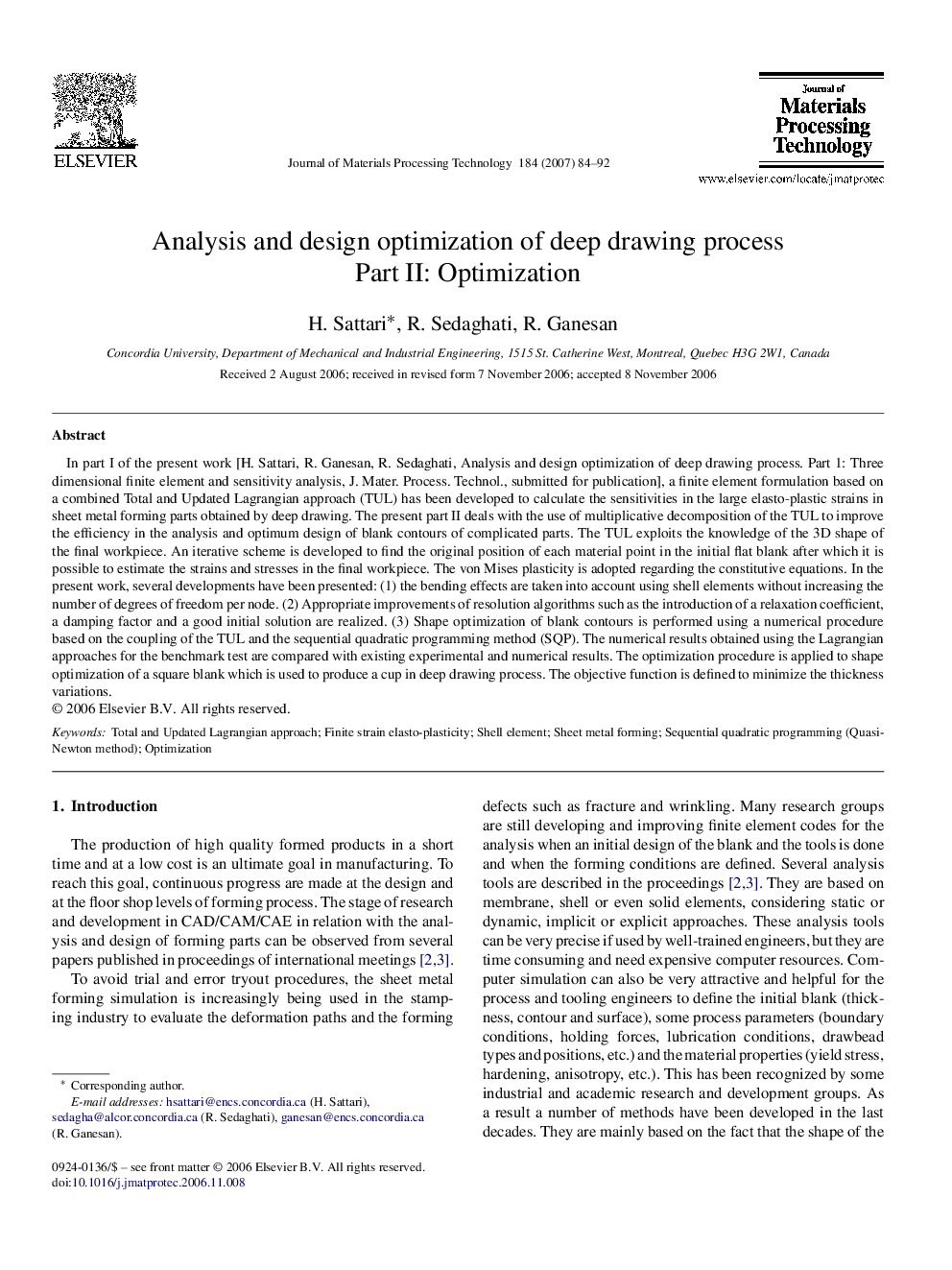| کد مقاله | کد نشریه | سال انتشار | مقاله انگلیسی | نسخه تمام متن |
|---|---|---|---|---|
| 798824 | 1466780 | 2007 | 9 صفحه PDF | دانلود رایگان |

In part I of the present work [H. Sattari, R. Ganesan, R. Sedaghati, Analysis and design optimization of deep drawing process. Part 1: Three dimensional finite element and sensitivity analysis, J. Mater. Process. Technol., submitted for publication], a finite element formulation based on a combined Total and Updated Lagrangian approach (TUL) has been developed to calculate the sensitivities in the large elasto-plastic strains in sheet metal forming parts obtained by deep drawing. The present part II deals with the use of multiplicative decomposition of the TUL to improve the efficiency in the analysis and optimum design of blank contours of complicated parts. The TUL exploits the knowledge of the 3D shape of the final workpiece. An iterative scheme is developed to find the original position of each material point in the initial flat blank after which it is possible to estimate the strains and stresses in the final workpiece. The von Mises plasticity is adopted regarding the constitutive equations. In the present work, several developments have been presented: (1) the bending effects are taken into account using shell elements without increasing the number of degrees of freedom per node. (2) Appropriate improvements of resolution algorithms such as the introduction of a relaxation coefficient, a damping factor and a good initial solution are realized. (3) Shape optimization of blank contours is performed using a numerical procedure based on the coupling of the TUL and the sequential quadratic programming method (SQP). The numerical results obtained using the Lagrangian approaches for the benchmark test are compared with existing experimental and numerical results. The optimization procedure is applied to shape optimization of a square blank which is used to produce a cup in deep drawing process. The objective function is defined to minimize the thickness variations.
Journal: Journal of Materials Processing Technology - Volume 184, Issues 1–3, 12 April 2007, Pages 84–92